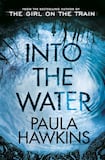
Before the psychological thriller, before suburban noir and domestic suspense, it was called had-I-but-known. Originating with Jane Eyre, it earned its wings in The Woman in White and informed the work of the golden-age precursor Mary Roberts Rinehart and the Gothic romancer Daphne du Maurier, among others.
In its essence, it involved a central female character who discovers over the course of the story that nothing is as it appeared to be, but that the world is no longer as frightening as it seemed. As opposed to detection, the truth usually emerged by coincidence, and, as Julian Symons remarked in Bloody Murder, his great history of crime fiction, "the mystery is prolonged only by the obstinate refusal of the characters to reveal essential facts".
The helpless, gaslit heroines of these tales fell gradually out of favour, to be replaced by more resourceful women protagonists. But in 2015, Paula Hawkins's The Girl on the Train marked the spectacular revival of had-I-but- known, with the hapless, drunken Rachel ultimately vindicated; its final line could have been: "Reader, I was right all along."
Significantly, Hawkins wrote romance (as Amy Silver) before coming to crime fiction. The Girl on the Train, which has sold more than 18 million copies, read like an inspired mash-up of the two genres, and it has proved hugely influential, with many novelists who 10 years ago would have been published between pastel covers now drawn to that book's dark central insight: that what may look like the happy marriage, the perfect life, is in all likelihood a terrible delusion.
Hard act to follow
Into the Water has a hard act to follow, then, and while it has a certain amount in common with its predecessor – a preoccupation with the stories we tell ourselves and how they conflict with each other and with the truth, and an alarming proliferation of reliably loathsome men – it wisely chooses to go its own way.
After a short prologue featuring the ducking of a suspected witch, Into the Water begins with Jules Abbott returning to the Northumbrian village of Beckford, where she and her estranged sister, Nel, used to spend their childhood holidays. Nel, an internationally successful photographer who retreated to the village to raise her daughter, Lena, and to work on a book about the many women who died over the years in the local drowning pool, has herself been found in the river. Lena's best friend, Katie Whitaker, died the same way a few months ago, and the police investigation into their deaths forms one strand of the novel.
As important to Jules, whose narration is addressed directly to the shade of her revered and feared older sister, are her recollection and evaluation of the shocking events that led to their estrangement. The novel turns on her coming to understand that the story she has told herself about her sister’s complicity in this episode is seriously flawed.
Many narrators
Whereas The Girl on the Train had a tight narrative structure, alternating between three characters, Into the Water employs more than a dozen narrators, including flashbacks to women who drowned in the pool in 1983, 1920 and 1679 (which may or may not be extracts from Nel's work-in-progress). The pleasing effect is to present a collage of an isolated community in all its variety, although the sheer number of voices on display can prove confusing, especially in the early stages.
"Beckford is a strange place, full of odd people, with a downright bizarre history," muses DS Erin Morgan, an outsider, who continues, "In whatever direction you go, somehow you always end up back at the river." The first time she sees her inspector, clad in black, standing by the water with Nel Abbott's corpse at his feet, she mistakes him for a priest, and the novel stokes up the rural Gothic and the fateful at any opportunity. Mostly this makes for an atmospheric read; occasionally, as in the narrative contributions of an old crone, Nickie Sage, who has second sight, it has a ripeness redolent of Cold Comfort Farm.
More seriously, the sheer number and diversity of narrative voices tend to undermine suspense and mitigate revelations when they come; chorus teeters into cacophony, and it can feel, structurally and texturally, as if crucial moments aren’t being accorded their due. Moreover, so many contradictory versions of the same events are presented that it is sometimes difficult to clarify the truth of what has actually occurred, which is fine in a literary novel but fatal in a psychological thriller.
On the other hand, the law of diminishing plot returns that besets domestic suspense, whereby the more compelling the set-up, the more convoluted and implausible the resolution, does not apply here. Into the Water ends on an agonisingly sombre fall, a threnody to Hawkins's vision of the mutual incomprehension and hostility between the sexes.
Declan Hughes is a novelist and playwright. He is currently Arts Council writer-in-residence at UCD.











